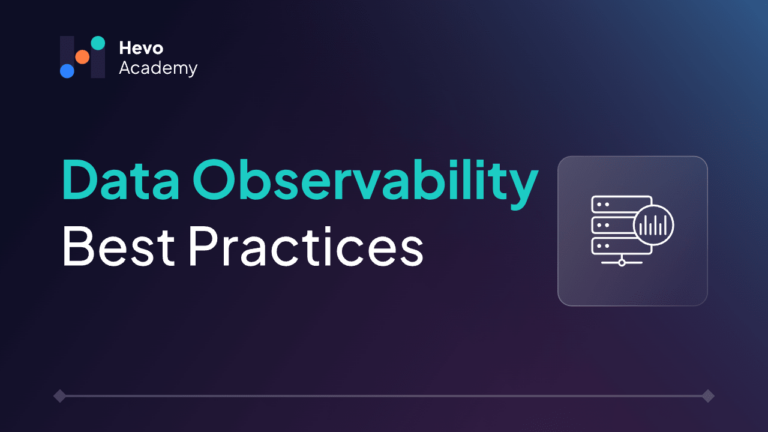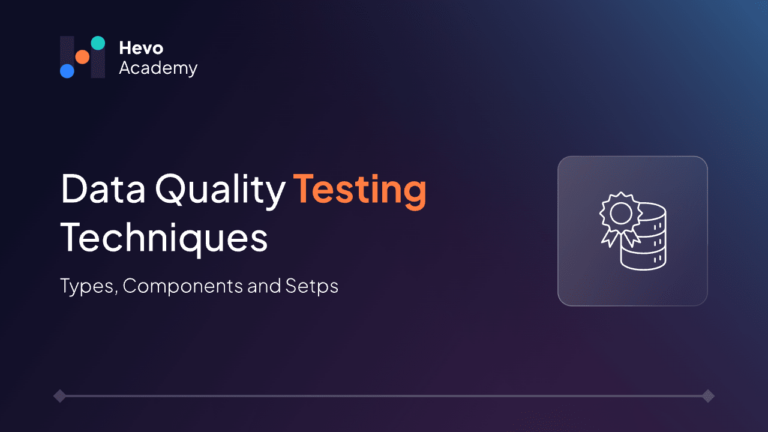These days businesses heavily rely on data to make informed decisions, optimize processes, and enhance customer experiences. Everyone wants to win the race with the power of data. However, the effectiveness and win-win situation depends on the quality of the data being used. Good quality data ensures that data is reliable, accurate, and consistent. Poor quality data can lead to misinterpreted information and reduced customer satisfaction. This itself explains the importance of quality data in this fast-moving world.
Table of Contents
In this blog, we discuss the concept of data quality, common data quality issues, their impact on businesses, and the best practices to maintain data integrity.
What is Data Quality?
Data quality can be defined as the ability of data to meet a company’s expectations on data standards and integrity. It refers to the condition of a dataset in terms of its accuracy, completeness, consistency, and relevance for its intended use. Collected data that is not able to fulfill the company’s expectations can have a negative impact on business. Hence it is important to have a proper data governance framework in place.
Below are five important dimensions or characteristics of data.
- Accuracy: If data is error-free and reliable
- Completeness: If all the data is available
- Consistency: If data remains uniform across various systems
- Validity: If data follows all the defined rules and standards
- Timeliness: If data is up to date
Data quality issues can cripple decision-making, leading to inconsistent reports, inaccurate insights, and lost opportunities. Hevo’s no-code data integration platform empowers teams to identify, address, and prevent data quality problems at scale.
Here’s how Hevo helps:
- Data Cleansing: Eliminate duplicates, correct formats, and standardize data seamlessly. Hevo’s built-in data transformation capabilities ensure clean and reliable datasets.
- Automated Data Validation: Hevo automatically detects anomalies and inconsistencies during the data ingestion process, ensuring only accurate data flows into your systems.
- Real-time Monitoring: Stay ahead of data quality issues with Hevo’s real-time monitoring tools. Get notified of discrepancies as they happen and resolve them quickly.
Don’t let data quality issues derail your business. With Hevo, you can proactively manage and improve the accuracy, consistency, and reliability of your data, enabling better decision-making and faster insights.
Get Started with Hevo for FreeWhat are Data Quality Issues?
Data quality issues are errors or inaccuracies in data. These harm business operations and decision-making. Inaccurate data that fails to meet the required standard during getting collected, and stored leads to bad data quality. Poor-quality data may have missing information, and contain errors, inconsistencies, or gaps. Using this data may lead to unreliable or inaccurate outputs. Addressing the risk of poor data quality starts with identifying common issues that affect data integrity, accuracy, and consistency across systems. These issues can arise due to multiple reasons for eg manual data entry, issues with system integration, or inadequate data governance. Data quality rules can be applied automatically during data processing to validate and clean datasets.
Common Data Quality Issues
Following are some of the commonly found data quality issues
1. Incomplete Data
One of the most critical data quality issues affecting organizations is ensuring data completeness, as incomplete data can lead to inaccurate analytics and flawed decision-making. For example, the address detail of a user booking a hotel may have a missing zip code or city.
2. Inconsistent Data
Many data points can be represented in multiple ways. Not following standard format can lead to inconsistent data. This can lead to confusion and faulty analysis. A very common example of inconsistent data is the use of different date formats like “MM/DD/YYYY” and “DD/MM/YYYY,” which can lead to inaccurate reporting.
3. Duplicate Data
While migrating data or due to human errors, it is common to end up having duplicate data in your tables. These duplicate entries can inflate numbers. For eg, duplicate entries of the same customer in the database can lead to false indications of gaining more customers.
4. Outdated Data
Often due to workload teams tend to forget scheduling updates to stored information. Using outdated information can lead to irrelevant conclusions. For example, users may change phone numbers and emails but may forget to update in system.
5. Inaccurate Data
According to Gartner inaccurate data costs organizations $12.9 million a year. Inaccuracies in data may arise from human errors during data entry. For example, users may add incorrect information for themselves.
6. Poor Data Governance
Without a well-defined governance framework, data platforms may lack direction on implementation. This may lead to inconsistent policies on data collection usage and storage. This may lead to data quality not meeting requirements across departments.
7. Data Silos
Siloed data hinders the flow of information across departments and collaboration. This leads to an incomplete picture for decision-makers. For instance, a marketing team may not have access to customer data from the sales department, resulting in uncoordinated efforts.
8. Human Error
Human error is the most common source of data quality issues. Data entries rely on human input. Relying completely on this information can cause issues. For example, the shop owner may add incorrect information about customers on the website form which may lead to a loss of information about a customer.
9. Data Downtime
Data Downtime can have an impact on businesses. Data outages may cause issues with schema and migration operations. For example, Data downtime on real-time turbine IOT data may depict the wrong status of the turbine.
10. Unstructured Data
Unstructured data can have data of any format and structure, for example, text, audio, or images. It can be difficult for engineering teams to store and analyze this data. For example, if a site allows to upload of files users may upload files of different formats and with different extensions.
Impact of Data Quality Issues on Businesses
Poor data quality can have negative effects on businesses. For example, during the festival season, an e-commerce company is thinking of starting a marketing campaign to increase its sales. The marketing team would require customer and visitor data information from CRM. If customer data is outdated or inaccurate, marketing campaigns may target the wrong audience, reducing engagement rates and wasting resources.
Data quality issues can also affect compliance with regulations like GDPR. Inaccurate reporting can lead to legal penalties and loss of customer trust.
Bad data quality can have negative consequences on the business including
- Revenue loss
- Damaged reputation
- Decreased customer satisfaction
- Increased IT Downtime
- Compliance issues
- Wrong decision making
Best Practices to Solve Data Quality Issues
Fertilizer to any successful business is good quality data. Implementing regular data quality testing is one of the most effective ways to detect and resolve issues early, ensuring data remains accurate and trustworthy. Below we discuss some best practices that can be implemented to ensure data integrity.
1. Data Validation
Data validation is about checking if data meets the set standards. Tracking data quality metrics is essential for identifying underlying issues and assessing improvements, as metrics provide measurable insights into data accuracy and reliability. For eg when we enter the phone number on websites, it checks for if the number has 10 digits in it. Data checks ensure that data is filtered before entering the system. Manual checking is often prone to errors, hence automated checks should be deployed to identify anomalies in real-time for correction.
2. Data Governance
The data governance framework sets policies and rules around how data is ingested, stored, and managed in the data platform. A robust data governance framework ensures data consistency across the organization. It guarantees that the data stored is trustworthy and is accessible by only the right entities.
3. Regular Data Audits
Data audits are a way to identify gaps, inconsistencies, and outdated records. This allows businesses to take corrective measures before issues grow. It is important to set time and assign accountability for periodic data audits.
4. Centralized Data Management
Data silos reduce interoperability and cooperation between departments. Hence it is important to break down data silos by creating a centralized data storage and platform. This can help everyone use the same data for their decisions and operations.
5. Automated Data Cleansing
Data cleaning is as important as validating it. This includes detecting duplicates, filling in missing values, and ensuring consistency across datasets. Many tools like Hevo can help to clean and transform data while maintaining high quality.
6. Data Standardization
Inconsistent data can be a headache for teams. Not only it is difficult to process, it may lead to wrong analysis results. Standardized data format makes everyone in the organization speak the same language. It makes data easily readable and understandable.
7. User Training
Educating the team on the importance of data quality is as important as setting up automation tools. This includes making them aware of the Data governance framework, data standards, and data sharing protocols.
Organizations facing data quality issues can implement specific strategies to improve overall data quality, ensuring that data is accurate, consistent, and reliable.
Conclusion
Maintaining data quality is equally important as collecting it. Bad data can ruin all the efforts of building expensive reporting dashboards to derive business value. Ensuring good data quality is important to deriving accurate insights. Understanding common data issues and best practices to mitigate the risks can help organizations mitigate risks and maintain data integrity. Using tools like Hevo’s built-in no-code transformations can simplify the process of maintaining high-quality data, ensuring that your business operates with reliable and actionable insights.
FAQs
1. What are examples of data quality issues?
Some examples of data quality issues are missing data, duplicate records, inaccurate information, inconsistent data formats, and outdated data.
2. What are the 5 factors of data quality?
There are many factors to data quality but the major five factors are accuracy, completeness, consistency, validity, and timeliness.
3. How do we resolve data quality issues?
Data Quality issues can be resolved by implementing data validations, data governance, automatic data cleaning pipelines, regular monitoring.
4. What are the 7 C’s of data quality?
The 7 C’s of data quality include completeness, consistency, conformity, cleanliness, currency, credibility, and clarity.






